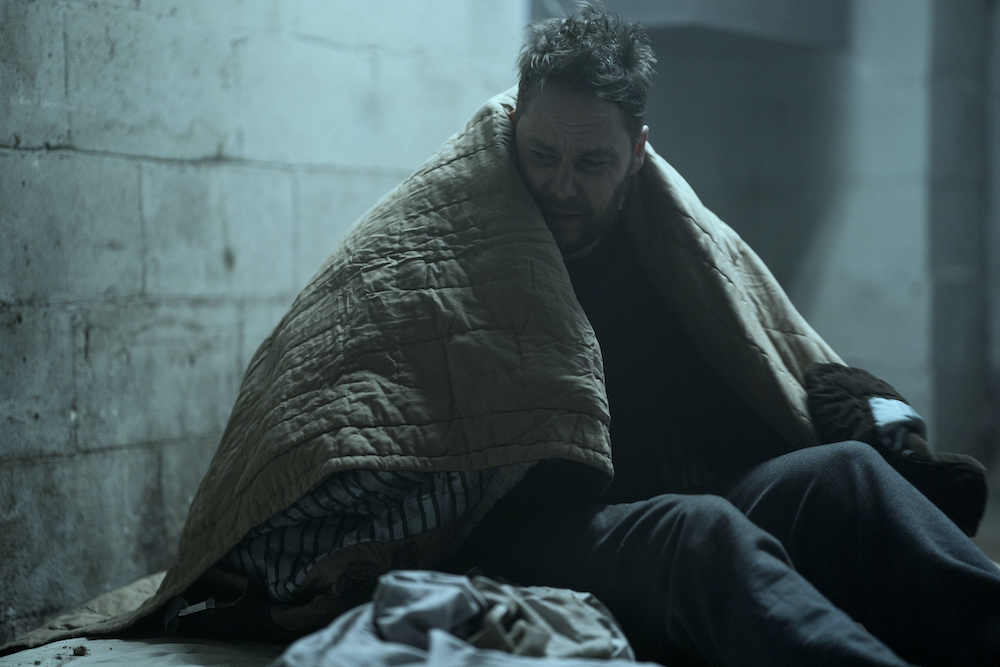Created by Micah Fitzerman-Blue and Noah Harpster, Netflix’s ‘Painkiller’ is a limited drama series that focuses on a disturbing story of a pharmaceutical company named Purdue Pharma’s quest to make money and its blatant disregard for human life. Told from different perspectives, the show gives us an insight into the development of a powerful new drug called OxyContin, which is rolled into the market as a solution to chronic pain.
However, the company underplays its effects, especially regarding addiction. As things worsen for the common people, Purdue refuses to acknowledge, let alone change its ways. It leads to a full-blown opioid crisis. If you are wondering whether the show is based on a true story and how much of it is rooted in reality, here’s what you should know.
Behind the Series: Research and Real Stories
‘Painkiller’ is based on the true story of the opioid crisis that started in the 1990s with the arrival of OxyContin. The show is based on the New Yorker article, ‘The Family That Built an Empire of Pain’ by Patrick Radden Keefe and Barry Meier’s book titled ‘Pain Killer: An Empire of Deceit and the Origin of America’s Opioid Epidemic.’ While all the events regarding Purdue Pharma and the crisis are true, it has been fictionalized a bit for dramatic effect. Interestingly, the Netflix production features a few characters based on real life, like Richard Sackler, Curtis Wright, and John Brownlee.

At the same time, we also see some made-up characters like Edie Flowers (who is a composite of all the characters who tried to bring the truth to light), Glen Kryger (who represents the common man affected by the crisis), and Shannon Schaeffer (who represents the sales reps who bought into the idea of selling the drug and making money without thinking about the consequences.) Called “one of the worst public health disasters” in the country, the opioid crisis has claimed over 600,000 lives since 1999. It all started with the introduction of OxyContin to the markets.

While OxyContin was approved by the FDA and promised by Purdue Pharma as a harmless drug to help people with pain, it was soon being prescribed in large amounts and was used by people as a recreational drug. Several factors have been attributed to the crisis and why it worsened so much and continues to, in waves. According to Howard Koh, the Harvey V. Fineberg Professor of the Practice of Public Health Leadership at the Harvard School of Public Health, “multi-system failure of regulation” is one of the major reasons behind the severity of the crisis.
“OxyContin approval is one example—Purdue Pharma was later shown to have presented a fraudulent description of the drug as less addictive than other opioids. The profit motive of the pharmaceutical industry remains ever-present. And that’s just the tip of the iceberg. Post-approval, it’s usually left up to industry—not regulators—to educate and advise prescribers on how to evaluate and mitigate risk. Donations from opioid manufacturers to politicians continue to influence policy decisions,” he stated.
After OxyContin and other drugs caused the first wave, the second wave was caused by the heroin market, and the third arose from drugs like fentanyl. According to the CDC, “nearly 75% of the 91,799 drug overdose deaths in 2020 involved an opioid.” The report further stated that from 2019 to 2020, opioid-involved death rates increased by 38%, Prescription opioid-involved death rates shot up by 17%, and Synthetic opioid-involved death rates (excluding methadone) increased by 56%. Between 1999 to 2020, deaths from an overdose involving any opioid were found to be more than 564,000.
With such an important subject matter, the show’s creators — Micah Fitzerman-Blue and Noah Harpster — wanted to highlight the truth behind the crisis, how it originated and then worsened over time, and more importantly, how it impacted the lives of people affected by it. In a conversation with Netflix, Tudum director Peter Berg revealed that the goal was “to capture the DNA that lives deep in the soul of the opioid crisis— a very dense and complex tragedy fueled by greed, corruption, human fragility, and more greed.”

Berg further elaborated on the intention behind the show and called it “the origin story of the collision between medicine and money,” which allowed the crisis to happen and worsen, despite knowing how bad it could get. “One of the many things that I thought was missing [from the conversation about OxyContin] was the introduction of the drug into mainstream medicine. How Arthur Sackler, a psychiatrist from New York who specialized in lobotomies, started to realize that the future was in pills — specifically in advertising pills. Whoever could market their drug better was going to make the most money,” he added, focusing on the importance of capturing that point of view for the audience.
For executive producer Eric Newman, the epidemic was a “horrible contradictory idea.” He said: “These things were killing just as many people and wrecking just as many lives, and the players were just as nefarious. But because it was legal, it was just a healthcare crisis. Unlike drug traffickers, who are never dishonest about who they are and what they do, this group pretends to care about the welfare of human beings. They’re doctors. I think it’s actually the greatest betrayal of public trust in history.” With all this in mind, it’s clear that even though the creators added some fictional elements to the story, ‘Painkiller’ remains firmly rooted in reality and represents different sides and how they were affected by the opioid crisis.
Read More: Where is Netflix’s Painkiller Filmed?


You must be logged in to post a comment.